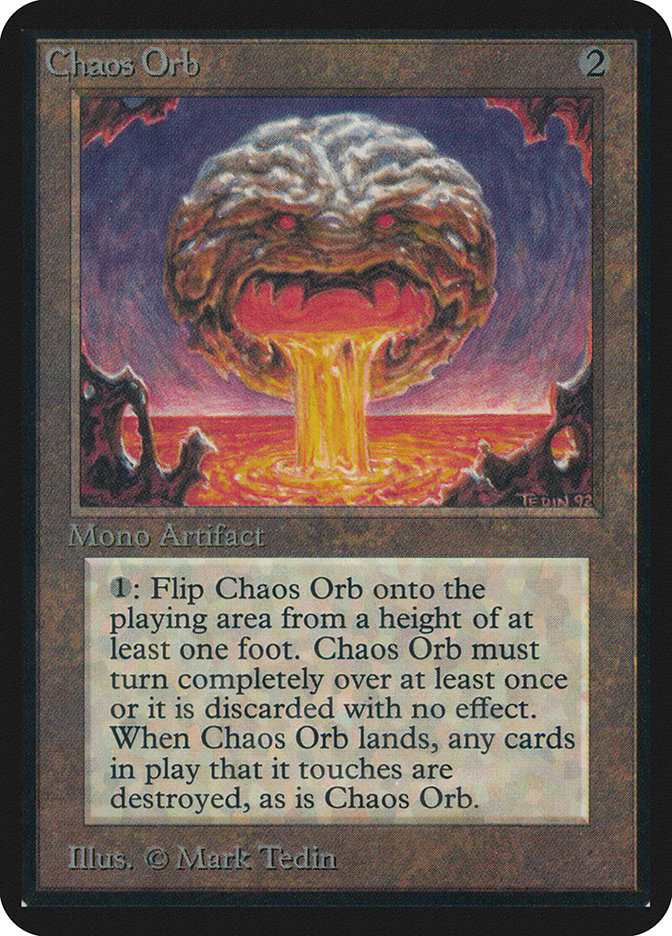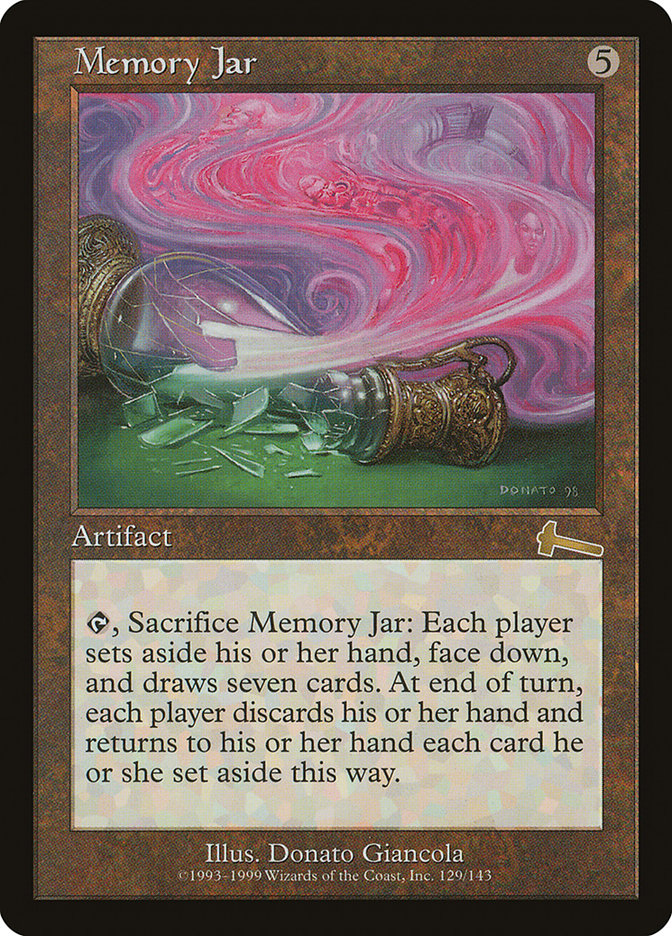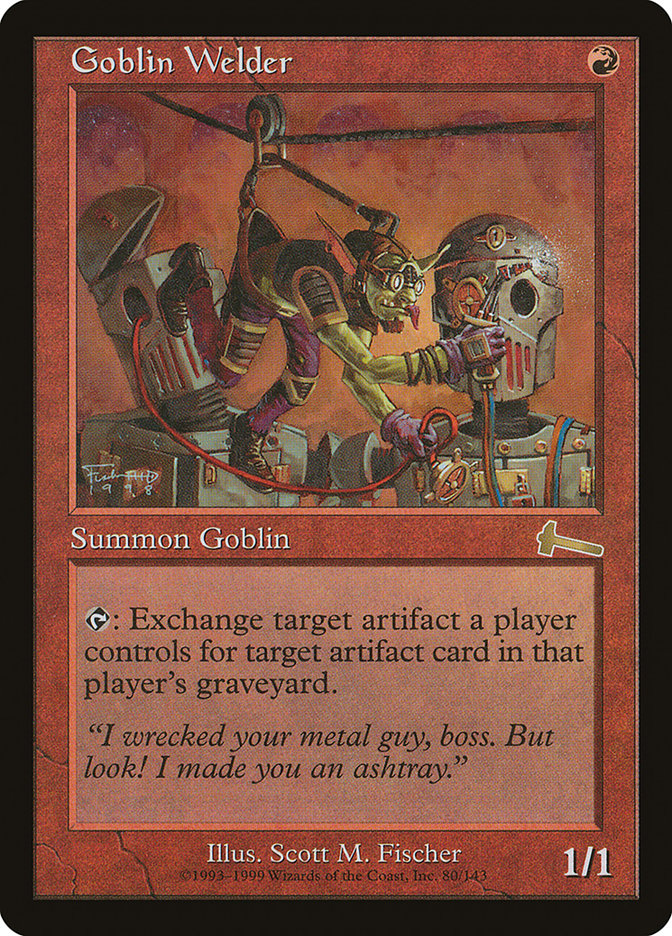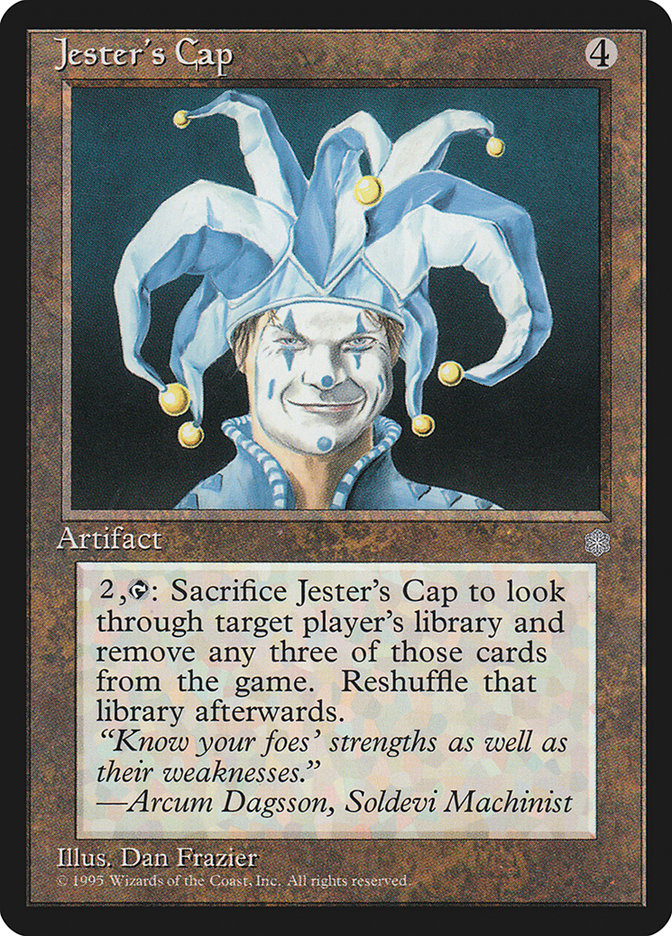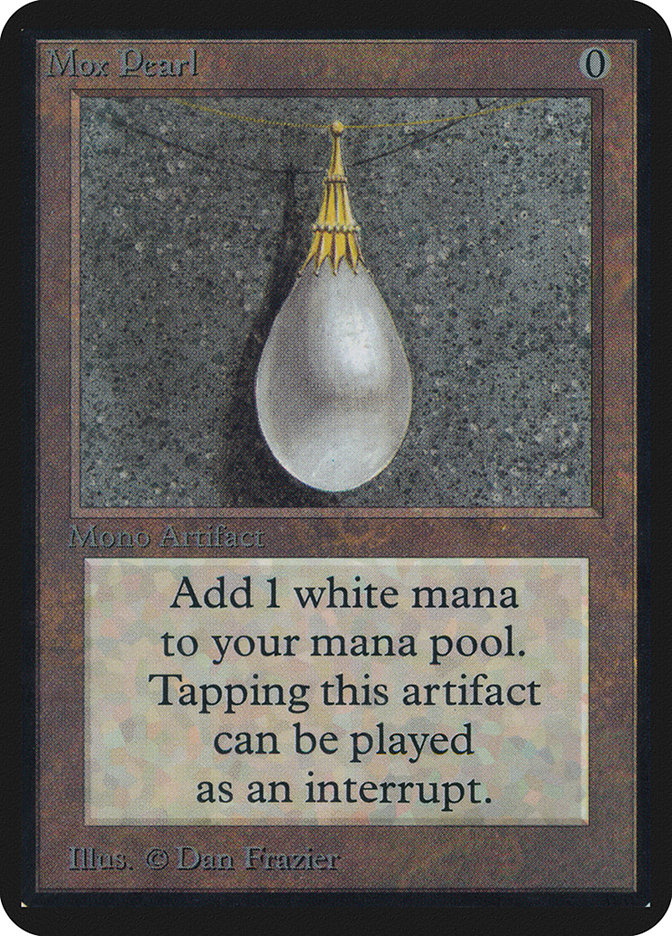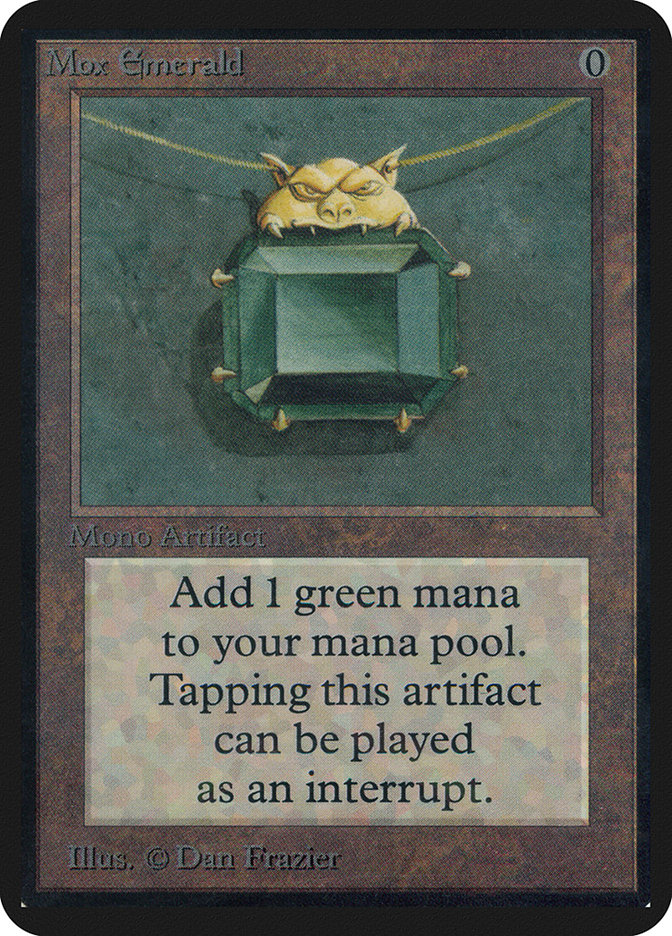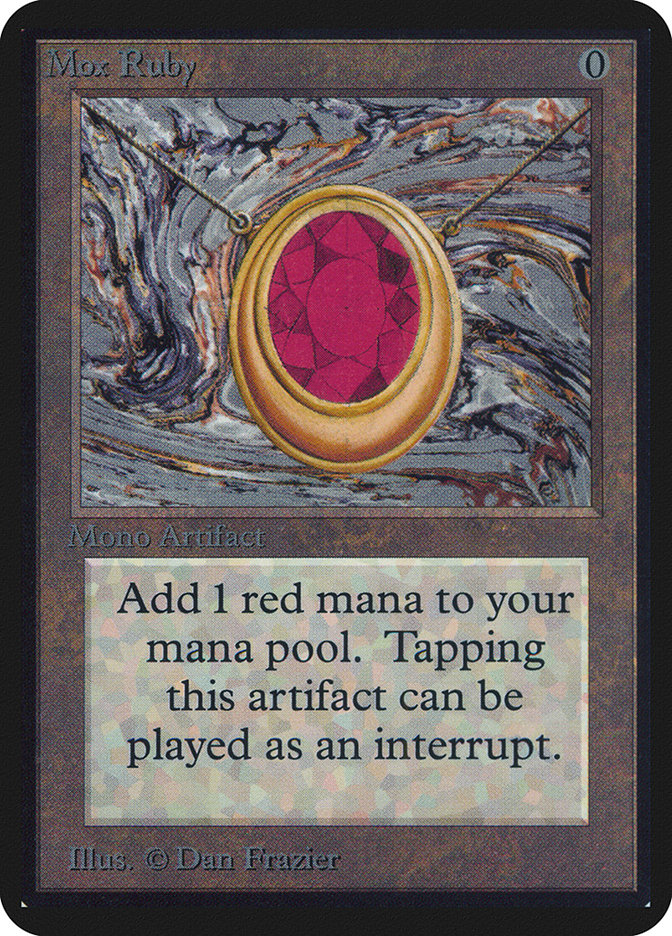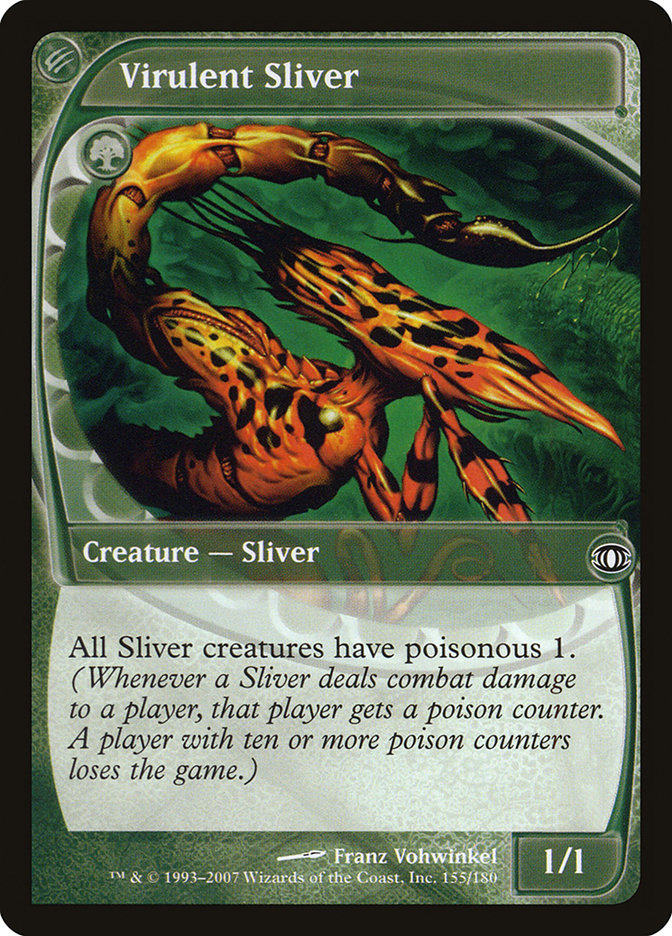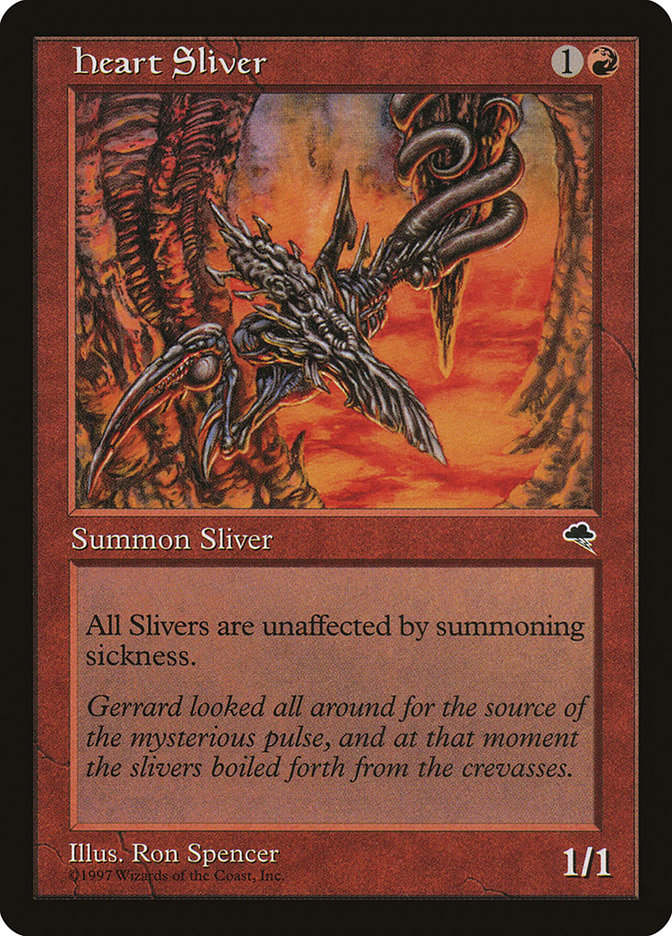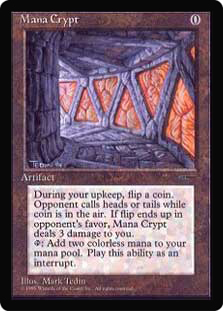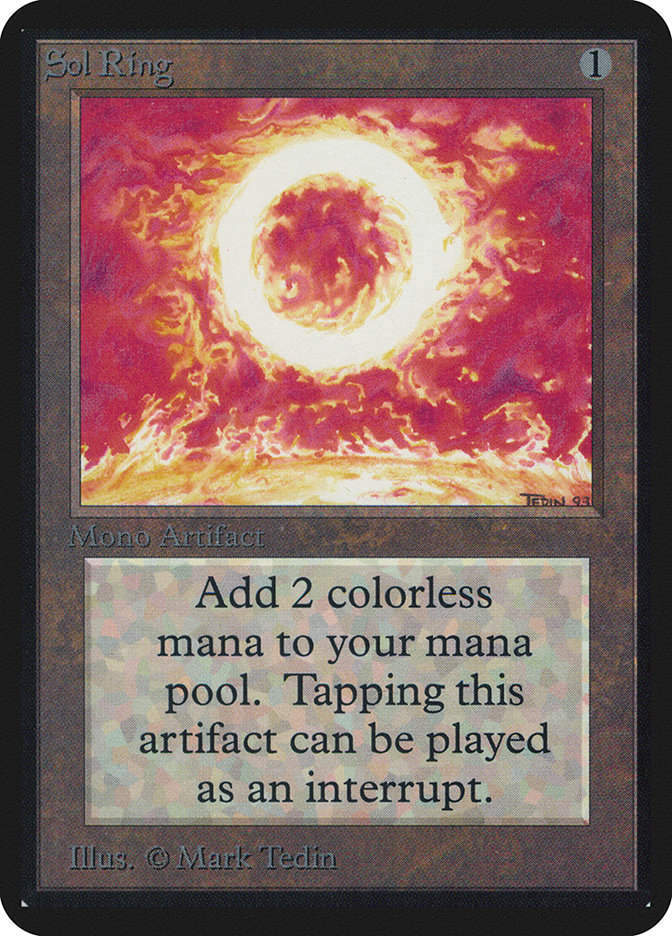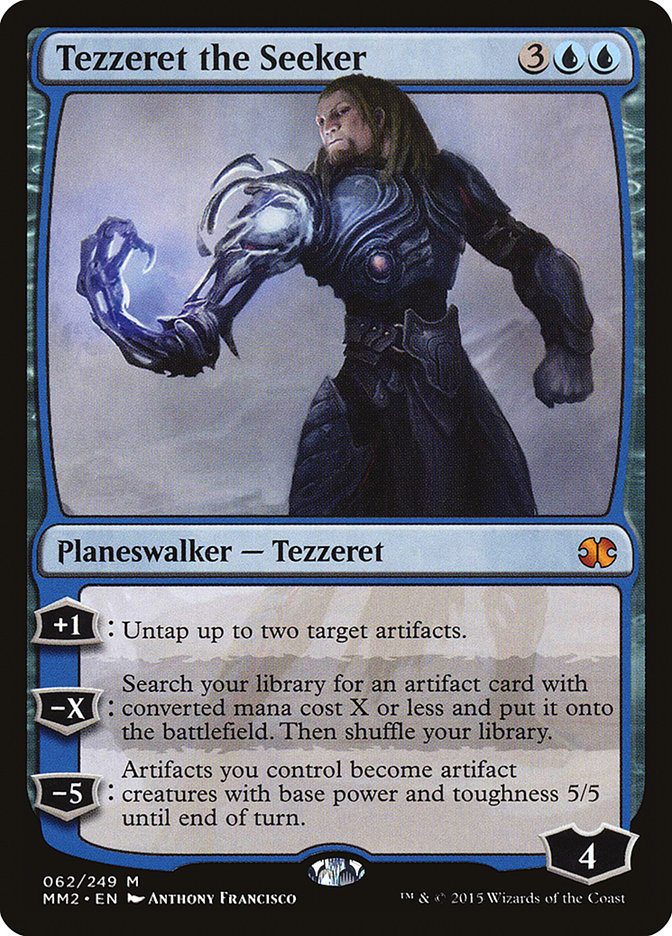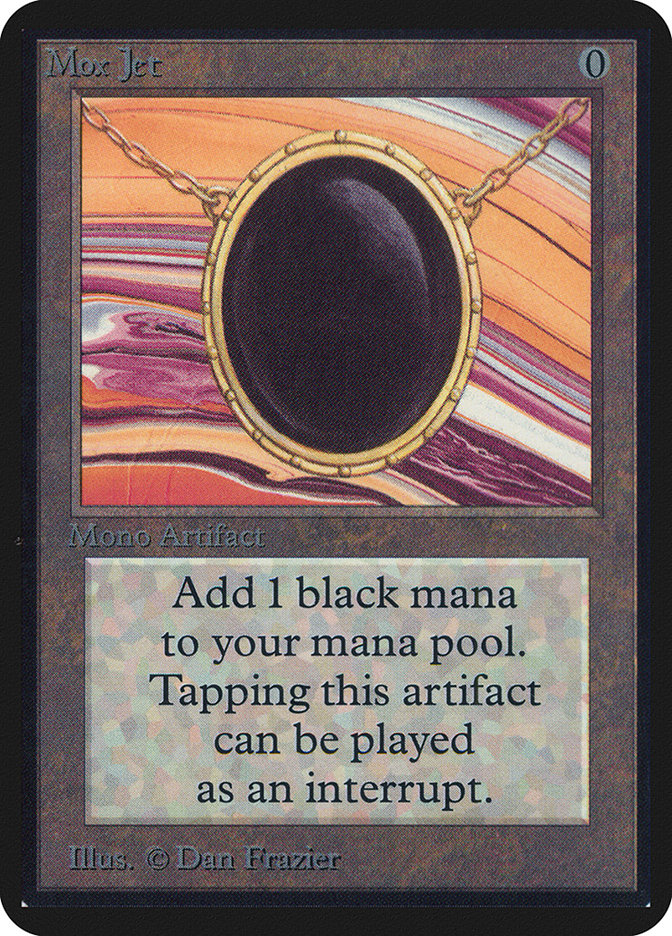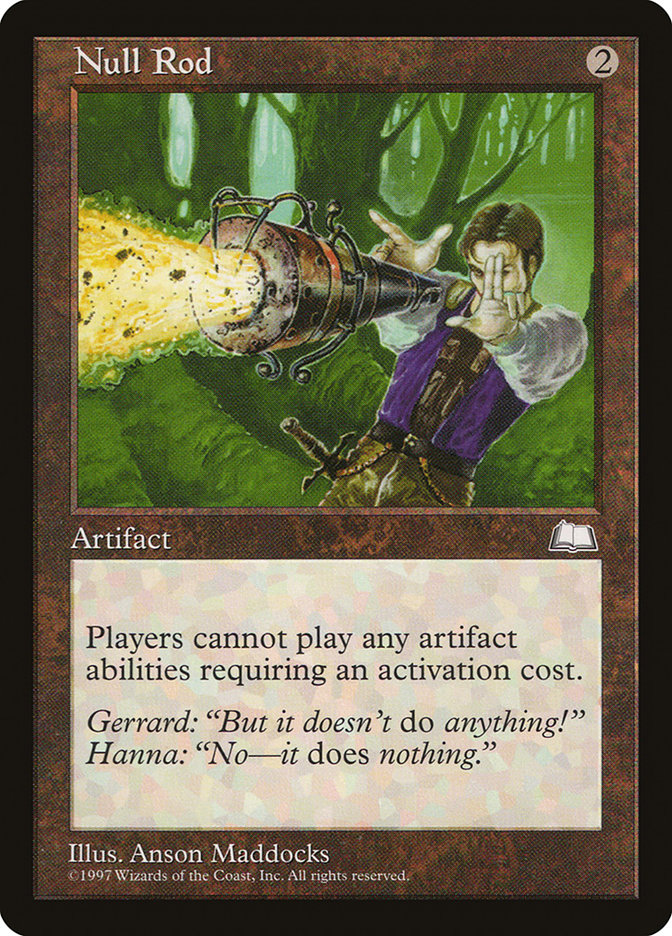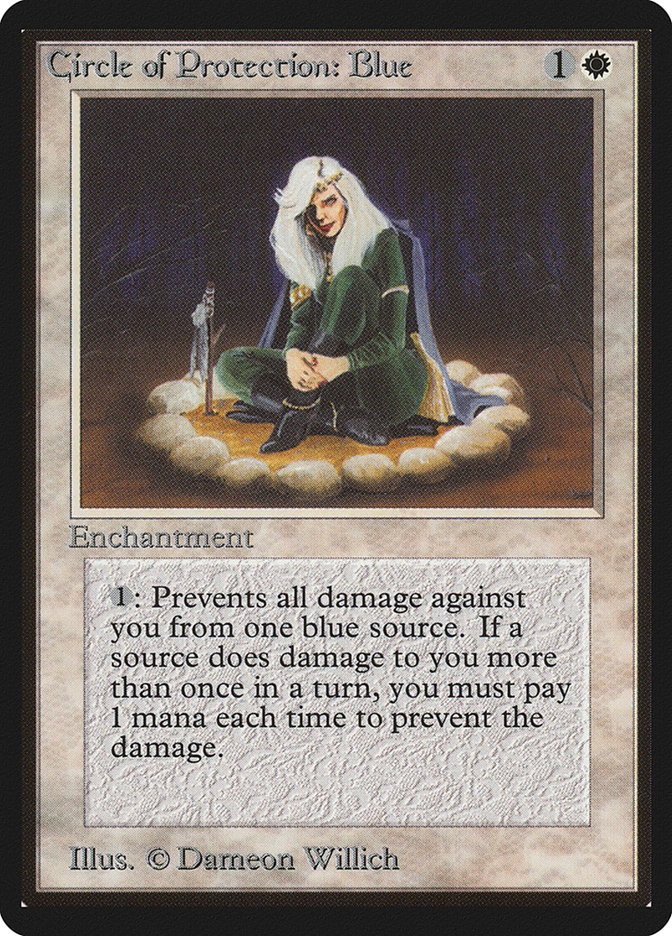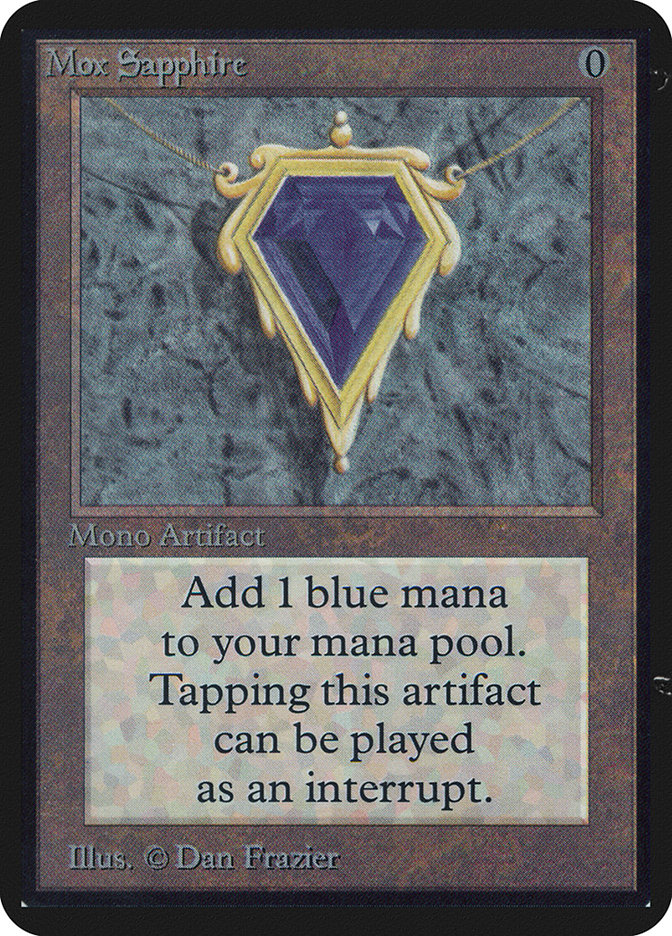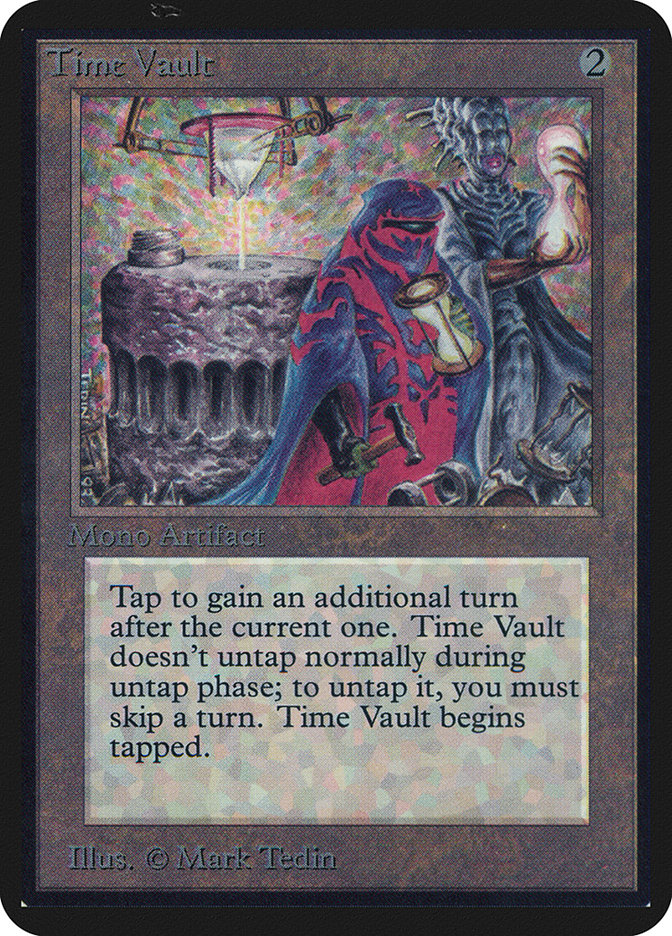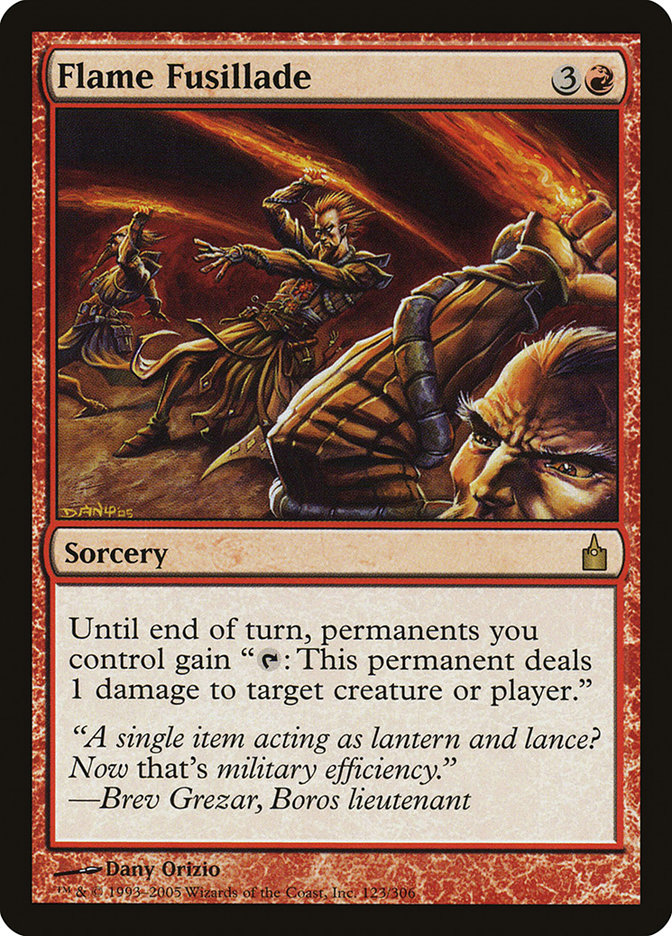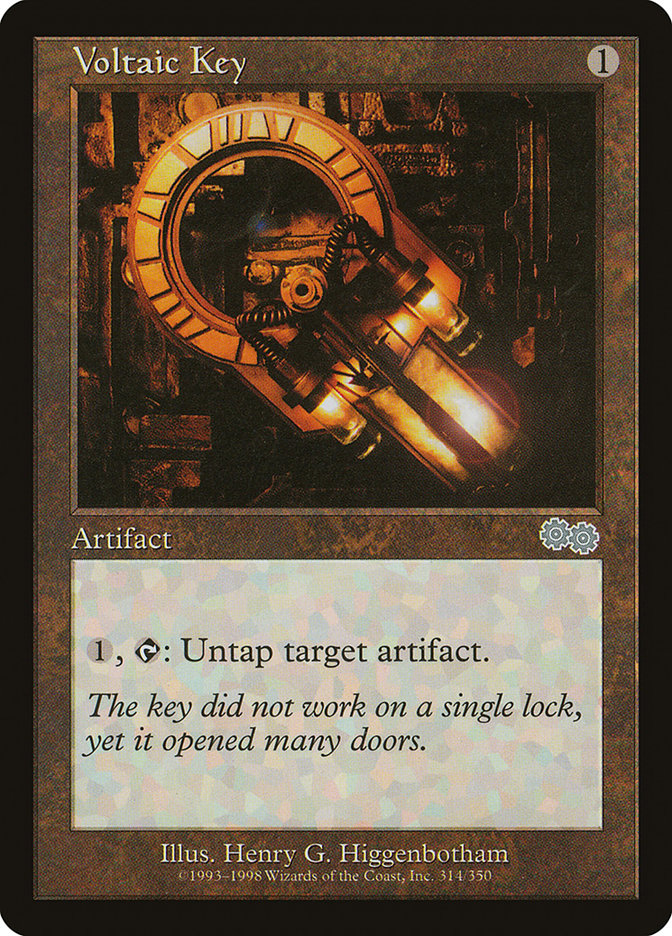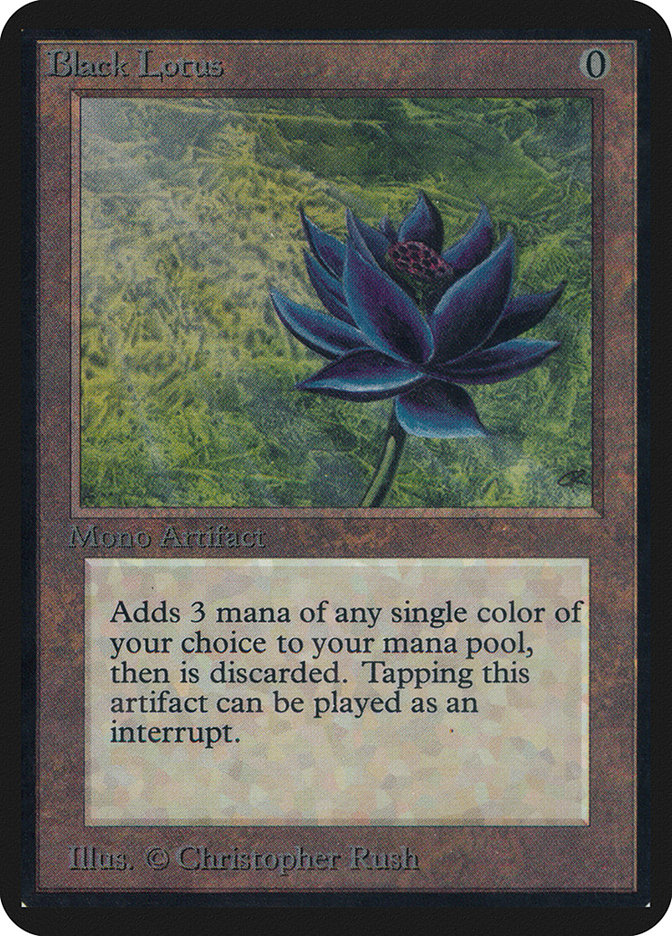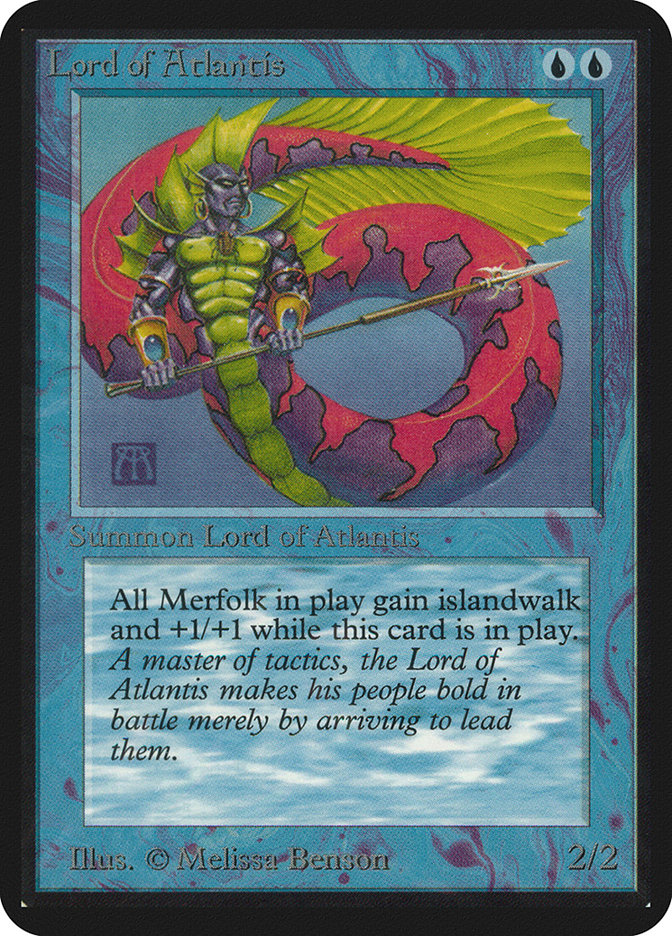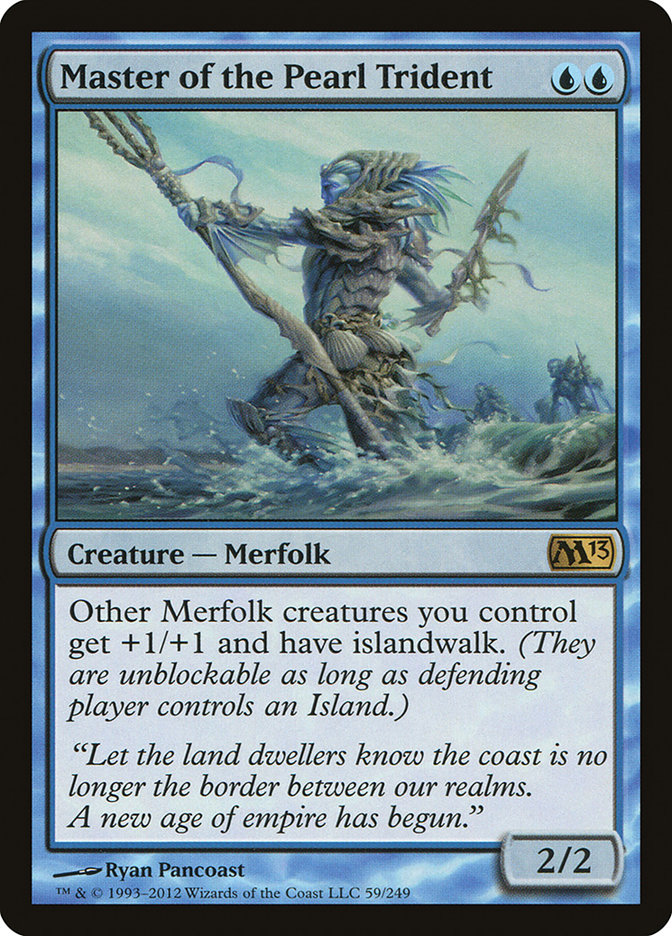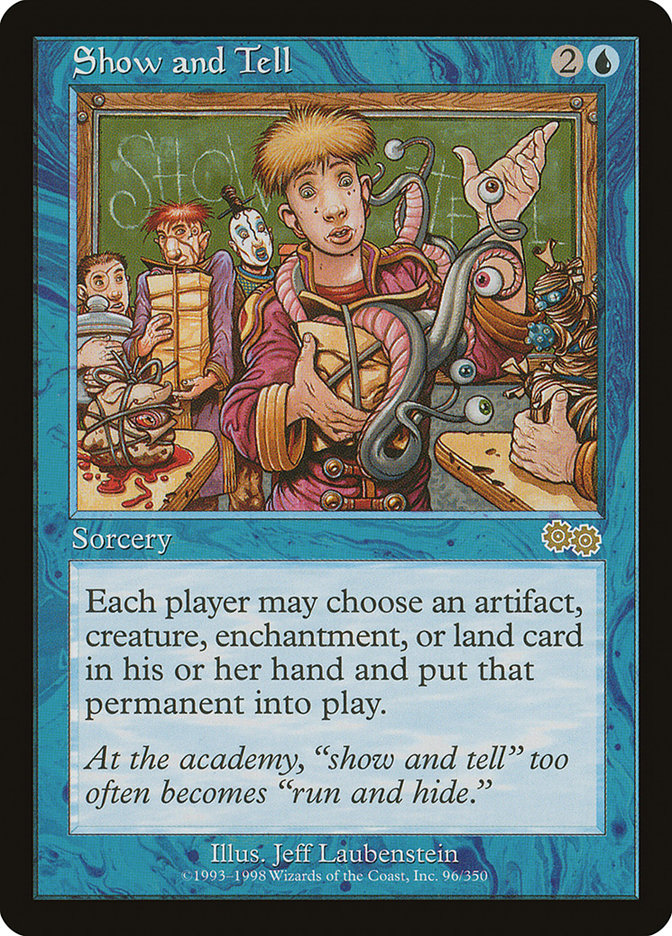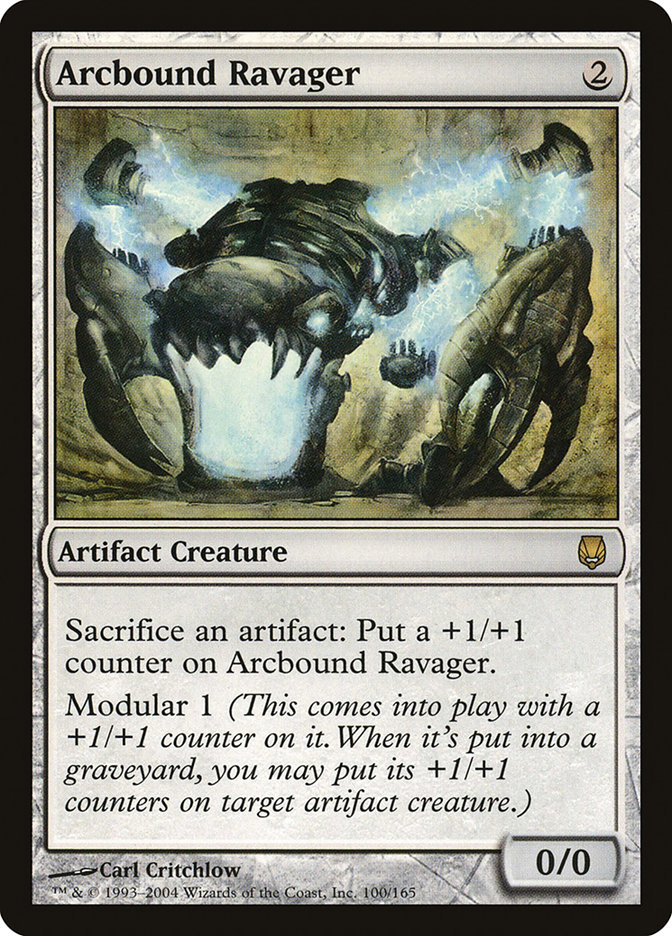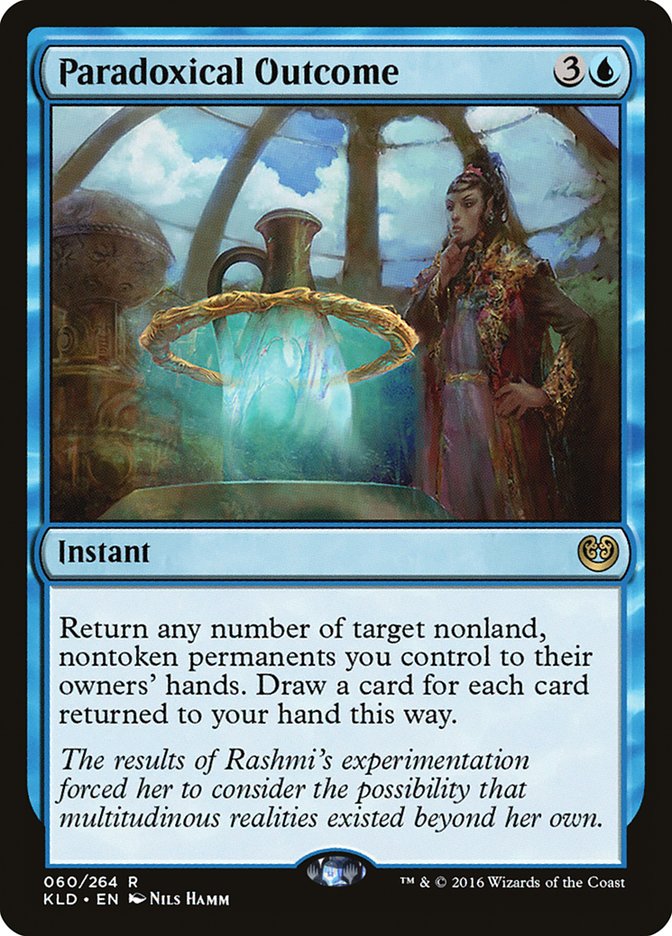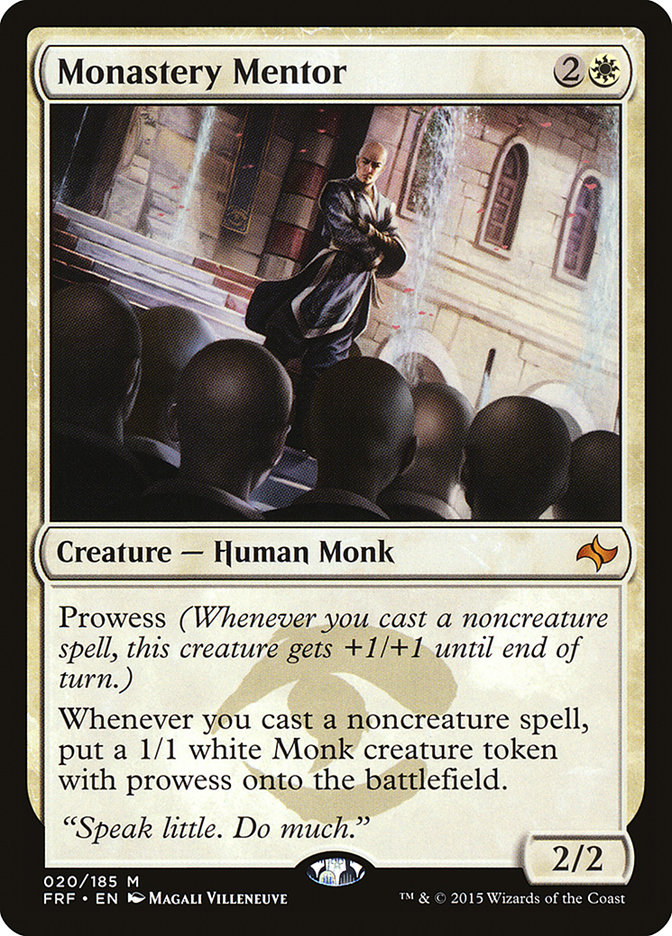Last week, we took a look at most of the strongest artifacts of all-time. Today we conclude the countdown with what would really be the top ten, if we weren’t lumping so much artifact mana together. That said, number “five” on our list doesn’t even produce mana…
5. Chaos Orb
A banned card?! What is this?
Well, it wasn’t always banned, and besides, it’s not like a card getting banned is an argument against its power being too high.
It might be hard to imagine these days, but Chaos Orb was actually legal for over two years before finally being banned. It was even in the first world champion’s deck, albeit in the sideboard:
Creatures (11)
- 4 Serra Angel
- 1 Birds of Paradise
- 1 Clone
- 1 Vesuvan Doppelganger
- 1 Time Elemental
- 1 Ley Druid
- 2 Old Man of the Sea
Lands (15)
Spells (34)
- 1 Mana Drain
- 1 Armageddon
- 1 Wrath of God
- 4 Swords to Plowshares
- 1 Icy Manipulator
- 1 Howling Mine
- 1 Winter Orb
- 2 Stasis
- 1 Mana Vault
- 1 Ivory Tower
- 1 Control Magic
- 1 Sol Ring
- 1 Regrowth
- 1 Time Walk
- 1 Ancestral Recall
- 1 Siren's Call
- 2 Meekstone
- 2 Disenchant
- 1 Black Vise
- 1 Kismet
- 1 Recall
- 1 Timetwister
- 1 Black Lotus
- 1 Mox Emerald
- 1 Mox Jet
- 1 Mox Pearl
- 1 Mox Ruby
- 1 Mox Sapphire

There are three primary schools of thought on how to flip a Chaos Orb.
Some folks like to pinch it on one of the long sides, then push downward, flipping it down and away from them. The goal with this approach, like every reasonable Chaos Orb strategy, is to flip it exactly once.
Another approach is to pinch it on both of the short sides (the top and bottom of the card) and flip it down and away from you.
In my humble opinion, however, the best strategy is to hold it between your thumb and middle finger of whichever hand isn’t dominant, parallel to the battlefield, with the bottom of the Chaos Orb closest to you (so the card would appear untapped from your perspective). Then, drop your dominant hand straight down over the side closer to it, flicking down with your middle finger down as though you were typing with it.
So, if you are right handed, you would drop your right hand down on the right side of the Chaos Orb, with your middle finger perpendicular to the Chaos Orb, flicking down the middle of the right side of the card. This approach looks a little funny, as it causes the card to flip faster than other approaches, however, the accuracy afforded by this style is unmatched.
What you don’t want to do, is pinch it the long way and flip it, nor any method that sends the Chaos Orb up rather than down.
4. Memory Jar
Speaking of not tapping for mana, #4 on our list is Memory Jar, which is merely a colorless Timetwister variant. While most commonly thought of as a part of fast combo decks using it as a draw-seven they can Tinker for, Roland Chang won the 2005 Vintage Championship with a Workshop deck packing four Goblin Welders, letting him use Memory Jar every turn.
He may not be “going off,” but that combination is an extremely powerful option for any deck to have access to as a possible gameplan to set up.
Creatures (8)
Lands (19)
Spells (33)
- 1 Vampiric Tutor
- 1 Mana Vault
- 1 Balance
- 1 Sol Ring
- 1 Demonic Tutor
- 1 Ancestral Recall
- 1 Imperial Seal
- 1 Mana Crypt
- 3 Sphere of Resistance
- 3 Crucible of Worlds
- 1 Trinisphere
- 1 Memory Jar
- 4 Smokestack
- 1 Tinker
- 1 Crop Rotation
- 1 Black Lotus
- 4 Tangle Wire
- 1 Mox Emerald
- 1 Mox Jet
- 1 Mox Pearl
- 1 Mox Ruby
- 1 Mox Sapphire
- 1 Tormod's Crypt

Honorable mention, by the way, to Jester’s Cap.
The days of Jester’s Cap being absolutely devastating to some decks are mostly gone, but this card was a real turning point in Magic’s history. It was one of the earlier designs that helped encourage more robust gameplay, punishing people too all-in.
As for Memory Jar plus Goblin Welder, the combination is flashy, but somewhat fragile and quite the blunt instrument. It can be quite good, but it wasn’t so good as to be mandatory for Memory Jar decks to play Goblin Welder or vice versa. For instance, Mark Biller’s Control Slaver list from the year before featured a playset of Goblin Welders (and of course, Tinker); but there wasn’t a Memory Jar to be seen (Mindslaver filling that role).
Creatures (7)
Lands (18)
Spells (35)

Yep, Old Man of the Sea, Flametongue Kavu, and Mogg Salvage, all Vintage World Champions. Vintage has had a lot of really nice ones get their day in the sun.
3. Mox Pearl
Mox Pearl is really great. Like a Plains, it taps for a white mana; however, unlike a Plains, it doesn’t count as your land for the turn, meaning you’re effectively a turn ahead, if you draw it early.
It may seem like a card for only white decks, but even decks without white cards can make good use of it as a source of colorless. For instance, Carl Winter won the Vintage Championship is 2003 with this list that capitalized on Mox Pearl as an enabler for cards like Merchant Scroll and Accumulated Knowledge a turn ahead of schedule.
Creatures (3)
Lands (17)
Spells (40)

3. Mox Emerald
Speaking of “off-color Moxes”, number three on our list is Mox Emerald. While in recent years Mox Emerald has become more and more popular to actually tap for colored mana, the card has a rich and proud history of tapping for colorless, such as in Travis Spero’s Vintage Championship list from 2006:
Creatures (1)
Lands (15)
Spells (44)
- 4 Brainstorm
- 4 Mana Drain
- 1 Vampiric Tutor
- 1 Mystical Tutor
- 1 Yawgmoth's Will
- 4 Force of Will
- 1 Mana Vault
- 1 Sol Ring
- 1 Demonic Tutor
- 1 Time Walk
- 1 Ancestral Recall
- 1 Mana Crypt
- 4 Gifts Ungiven
- 1 Burning Wish
- 4 Merchant Scroll
- 1 Chain of Vapor
- 2 Misdirection
- 1 Tinker
- 1 Rebuild
- 1 Black Lotus
- 1 Fact or Fiction
- 1 Recoup
- 1 Lotus Petal
- 1 Mox Emerald
- 1 Mox Jet
- 1 Mox Pearl
- 1 Mox Ruby
- 1 Mox Sapphire

You might be wondering, why just colorless? Why not at least splash with your Moxes? Well, some players have experimented with doing just that.
3. Mox Ruby
Number three on our list is the illustrious Mox Ruby, which Steve Menendian experimented with the very next year. While his Gro-a-Tog deck was primarily Sultai, the Mox Ruby splash for maindeck Red Elemental Blast helped propel him to the title of 2007 Vintage Champion!
Creatures (5)
Lands (14)
Spells (41)
- 4 Brainstorm
- 1 Fastbond
- 2 Mana Drain
- 1 Vampiric Tutor
- 1 Mystical Tutor
- 1 Yawgmoth's Will
- 4 Duress
- 4 Force of Will
- 1 Demonic Tutor
- 1 Time Walk
- 1 Ancestral Recall
- 1 Red Elemental Blast
- 4 Gush
- 1 Cunning Wish
- 4 Merchant Scroll
- 2 Misdirection
- 1 Black Lotus
- 3 Opt
- 1 Mox Emerald
- 1 Mox Jet
- 1 Mox Ruby
- 1 Mox Sapphire
Sideboard

That same year, I actually ran a similar splash, with a Mox Ruby helping fuel a single red card splash. The main difference in our styles, however, was that while Menendian opted for a hyper-efficient counterspell / removal card as his lone red card, I went a little different of a direction.
Creatures (10)
Lands (11)
Spells (39)

While I think Virulent Sliver is the stronger card (and here, I’m running a full playset), Heart Sliver is really nice because it gives all of your Slivers haste.
Haste doesn’t stack, so you only really need one, but it does add a key component to the deck, speeding up your close by a turn. When you’ve got cards like Mox Ruby letting you play Flash a turn earlier than normal, speeding up your clock by another turn is a big deal.
With all this tapping for colorless, why not use actual colorless mana?
That’s a great question, a great point, and one not lost on some Vintage champions.
3. Mana Crypt
Number three on our list is Mana Crypt, a card utilized the very next year by Paul Mastriano on his way to winning the Vintage Championship with his fast combo deck.
Creatures (1)
Lands (12)
Spells (47)
- 1 Tendrils of Agony
- 1 Brainstorm
- 2 Cabal Ritual
- 1 Yawgmoth's Bargain
- 1 Vampiric Tutor
- 1 Mystical Tutor
- 1 Yawgmoth's Will
- 4 Duress
- 4 Force of Will
- 1 Necropotence
- 1 Mana Vault
- 1 Sol Ring
- 1 Demonic Tutor
- 1 Hurkyl's Recall
- 1 Time Walk
- 4 Dark Ritual
- 1 Ancestral Recall
- 3 Grim Tutor
- 1 Mana Crypt
- 1 Timetwister
- 1 Gifts Ungiven
- 1 Merchant Scroll
- 1 Memory Jar
- 1 Chain of Vapor
- 1 Misdirection
- 1 Tinker
- 1 Black Lotus
- 1 Fact or Fiction
- 1 Lotus Petal
- 1 Mox Emerald
- 1 Mox Jet
- 1 Mox Pearl
- 1 Mox Ruby
- 1 Mox Sapphire
- 1 Ponder
Sideboard

For those not familiar, fast combo decks using lots of fast mana and draw-sevens have, at various points, had names involving the word “Long” (though “Storm” has grown to be the most common name). The original “Long” deck was a fast combo deck designed by famed deck designer Mike Long that would use Burning Wish to find Yawgmoth’s Will. Even after Burning Wish was restricted, many players continued to use the naming convention, as it best described the style of deck relative to the era.
3. Sol Ring
Number three on our list is a little slower than Mana Crypt, but without the downside of all that upkeep damage business. Rather than limit himself to just one or the other, the 2009 Vintage Champion, Itou Hiromichi, ran both Mana Crypt and Sol Ring in his Tezzeret Control list.
Tezzeret the Seeker costs five but frequently wins the game, or wins the game the next turn. That makes it a great candidate to get out two turns early.
Creatures (6)
Planeswalkers (1)
Lands (16)
Spells (37)
- 2 Sensei's Divining Top
- 1 Brainstorm
- 4 Mana Drain
- 1 Vampiric Tutor
- 1 Mystical Tutor
- 1 Yawgmoth's Will
- 4 Force of Will
- 1 Sol Ring
- 1 Demonic Tutor
- 1 Hurkyl's Recall
- 1 Time Walk
- 1 Ancestral Recall
- 1 Mana Crypt
- 1 Time Vault
- 1
- 1 Merchant Scroll
- 1 Rack and Ruin
- 1 Thirst for Knowledge
- 1 Chain of Vapor
- 1 Misdirection
- 1 Tinker
- 1 Voltaic Key
- 1 Black Lotus
- 1 Fact or Fiction
- 1 Mox Emerald
- 1 Mox Jet
- 1 Mox Pearl
- 1 Mox Ruby
- 1 Mox Sapphire
- 1 Darkblast

3. Mox Jet
Number three on our list is Mox Jet. Like Mox Pearl, it taps for the same mana a basic land makes. Unlike Mox Pearl, however, it isn’t likely to be relegated to merely colorless status. It’s not that every deck plays black. It’s just that when people play white, but not black, they are far more likely to be playing less than the full collection of Moxes, perhaps because of cards like Null Rod.
Mox Jet is one of the best Moxes ever made, in no small part thanks to the plethora of overpowered black cards making up Magic’s best-of list. The 2010 Vintage Champion, Hall of Famer Owen Turtenwald, showcased Mox Jet’s black mana capabilities in a control deck that could combine it with even a Forest to cast a Turn 1 Dark Confidant.
While Owen did have some exciting upkeeps, thanks to cards like Inkwell Leviathan meaning Dark Confidant might deal a lot of damage, the average Vintage card costs 0.00004 mana, making the Confidant less of a risk than it would be otherwise.
Creatures (8)
Planeswalkers (3)
Lands (16)
Spells (33)
- 1 Sensei's Divining Top
- 1 Brainstorm
- 2 Mana Drain
- 1 Vampiric Tutor
- 1 Yawgmoth's Will
- 4 Force of Will
- 1 Sol Ring
- 1 Demonic Tutor
- 1 Time Walk
- 1 Ancestral Recall
- 1 Mana Crypt
- 1 Time Vault
- 1 Merchant Scroll
- 1 Tinker
- 1 Voltaic Key
- 1 Black Lotus
- 1 Mox Emerald
- 1 Mox Jet
- 1 Mox Pearl
- 1 Mox Ruby
- 1 Mox Sapphire
- 3 Thoughtseize
- 4 Spell Pierce
- 1 Nature's Claim

While the lists we’ve been discussing today have Vintage Championship titles as a common theme, that’s not the only thing they have in common.
Believe it or not, Vintage has not actually had that even of a distribution of colors among its champions. As we’ve been seeing, there’s a pretty good diversity of decks, but the color blue is currently ahead of the other colors, possibly partially because of the restricted cards it is so well known for.
When a color is better than other colors, you might conclude that the Mox that makes that color might be better than the other Moxes.
3. Mox Sapphire
You’d be right.
Mox Sapphire is extremely strong, because unlike other Moxes, it produces blue mana. It still has the colorless mana capabilities, but blue mana is just so gosh darn useful.
Mox Sapphire is the only Mox used by the 2011 Vintage champion, Mark Hornung, in his Dredge deck, most likely because of the colors of the rest of his cards.
Creatures (27)
- 2 Ichorid
- 1 Flame-Kin Zealot
- 4 Golgari Grave-Troll
- 2 Golgari Thug
- 4 Stinkweed Imp
- 4 Narcomoeba
- 3 Fatestitcher
- 4 Bloodghast
- 3 Sun Titan
Lands (13)
Spells (20)
- 1 Ancestral Recall
- 4 Cabal Therapy
- 4 Serum Powder
- 1 Black Lotus
- 1 Lotus Petal
- 1 Lion's Eye Diamond
- 1 Mox Sapphire
- 3 Dread Return
- 4 Bridge from Below
Sideboard

2. Time Vault
While Time Vault has occasionally been used as an “untap” enabler for weird combos (that generally don’t work anymore and debatably should never have worked), such as with Flame Fusillade, its primary function is taking extra turns.
I wrote the full history of Time Vault here. As for Vintage championships, the 2012 winner came packing Time Vault with a plan of untapping it with Voltaic Key rather than skipping a turn.
While Voltaic Key does cost a mana, not skipping a turn is frequently worth more than a mana, netting you a profit on the exchange. Since taking an extra turn kind of undoes most every cost you paid, you’ve basically won the game at that point. You can just keep taking turns until you eventually find whatever you want and win however makes sense. That’s a pretty strong game state to get into, and with both parts of the combo costing just four mana total, the combination is ruthlessly fast and effective.
Creatures (8)
Planeswalkers (2)
Lands (15)
Spells (35)
- 1 Sensei's Divining Top
- 1 Brainstorm
- 2 Mana Drain
- 2 Lightning Bolt
- 1 Vampiric Tutor
- 1 Mystical Tutor
- 1 Yawgmoth's Will
- 4 Force of Will
- 1 Sol Ring
- 1 Demonic Tutor
- 1 Hurkyl's Recall
- 1 Time Walk
- 1 Ancestral Recall
- 1 Mana Crypt
- 1 Time Vault
- 1 Merchant Scroll
- 1 Tinker
- 1 Voltaic Key
- 1 Black Lotus
- 1 Mox Emerald
- 1 Mox Jet
- 1 Mox Pearl
- 1 Mox Ruby
- 1 Mox Sapphire
- 1 Nihil Spellbomb
- 3 Mental Misstep
- 2 Flusterstorm

If you happen to draw both Time Vault and Voltaic Key in your opening hand, you’re just three mana away (after your first land drop) from taking all the turns, from here on out. If only there was a way to get three extra mana…
1. Black Lotus
In a surprise to hopefully no one, the best artifact of all-time is Black Lotus. Like, Lotus Petal was in our Top 10 and it makes one-third as much mana. Lion’s Eye Diamond was in our Top 10 and it makes you discard your entire hand. Black Lotus is just so far beyond, it boggles the mind.
For instance, image you have Lord of Atlantis and Master of the Pearl Trident. Normally, you’d have to wait until your second turn to cast one or the other. Not with Black Lotus! No, with Black Lotus, you can cast them both on the very first turn, accelerating the game’s timetable a bit.
This interaction was not lost on 2013 Vintage Champion, Joel Lim:
Creatures (24)
- 1 Waterfront Bouncer
- 4 Lord of Atlantis
- 3 Merrow Reejerey
- 4 Silvergill Adept
- 4 Cursecatcher
- 3 Phantasmal Image
- 4 Master of the Pearl Trident
- 1 True-Name Nemesis
Lands (18)
Spells (18)
- 4 Force of Will
- 1 Time Walk
- 1 Ancestral Recall
- 3 Null Rod
- 2 Daze
- 1 Black Lotus
- 1 Mox Sapphire
- 1 Steel Sabotage
- 3 Mental Misstep
- 1 Flusterstorm
Sideboard

Choosing a Black Lotus deck to feature is a little silly, since nearly every single deck in history that can play Black Lotus wants to. Yeah, there have occasionally been weird Dredge decks or whatever, but even some of those use Black Lotus from time to time.
Instead of focusing on just one Black Lotus deck, I’d like to take the rest of the day to finish out the Vintage World Championship decks, as they really do help to showcase just how rich and complex the history of Vintage has been.
Sure, there have been times where the same “archetype” has won the Vintage championship twice, but take Mark Tocco and Brian Kelly’s Oath decks as an example. They won the 2014 and 2015 Vintage championships, respectively, and while they are both Oath decks, they are definitely not the same deck.
Creatures (3)
Planeswalkers (2)
Lands (15)
Spells (40)
- 1 Brainstorm
- 3 Mana Drain
- 3 Show and Tell
- 1 Vampiric Tutor
- 4 Oath of Druids
- 4 Force of Will
- 1 Sol Ring
- 1 Demonic Tutor
- 1 Time Walk
- 1 Ancestral Recall
- 2 Misdirection
- 1 Black Lotus
- 1 Mox Emerald
- 1 Mox Jet
- 1 Mox Pearl
- 1 Mox Ruby
- 1 Mox Sapphire
- 1 Ponder
- 1 Maelstrom Pulse
- 4 Preordain
- 4 Mental Misstep
- 2 Flusterstorm
Sideboard

Getting a fast Griselbrand with tons of Counterspells and Show and Tells? Okay, that’s sweet.
Brian Kelly, on the other hand, featured just one Griselbrand and not a single Show and Tell. Instead, he ran a pair of white creatures, Dragonlord Dromoka and Auriok Salvagers, along with oodles of planeswalkers.
Creatures (3)
Planeswalkers (4)
Lands (17)
Spells (36)
- 2 Sensei's Divining Top
- 1 Brainstorm
- 4 Oath of Druids
- 3 Force of Will
- 1 Sylvan Library
- 1 Sol Ring
- 1 Time Walk
- 1 Ancestral Recall
- 1 Mana Crypt
- 2 Pyrite Spellbomb
- 1 Black Lotus
- 1 Mox Emerald
- 1 Mox Jet
- 1 Mox Pearl
- 1 Mox Ruby
- 1 Mox Sapphire
- 1 Engineered Explosives
- 1 Repeal
- 1 Ancient Grudge
- 1 Ponder
- 2 Mental Misstep
- 3 Gitaxian Probe
- 2 Flusterstorm
- 2 Dig Through Time

In 2016, Joseph Bogaard won the Vintage Championship with Landstill and the fearsome power of a colorless (though not artifact) creature, Emrakul, the Promised End:
Creatures (3)
Planeswalkers (2)
Lands (22)
Spells (33)
- 1 Sensei's Divining Top
- 1 Brainstorm
- 3 Mana Drain
- 4 Force of Will
- 3 Swords to Plowshares
- 1 Sol Ring
- 1 Time Walk
- 1 Ancestral Recall
- 1 Moat
- 4 Standstill
- 1 Crucible of Worlds
- 1 Black Lotus
- 1 Mox Pearl
- 1 Mox Sapphire
- 1 Engineered Explosives
- 1 Mindbreak Trap
- 3 Mental Misstep
- 1 Flusterstorm
- 1 Supreme Verdict
- 1 Treasure Cruise
- 1 Dig Through Time

Colorless creatures continued their reign of terror, and the following year’s title went to Andrew Markiton and his Ravager Workshop deck:
Creatures (27)
- 4 Arcbound Ravager
- 1 Lodestone Golem
- 4 Steel Overseer
- 4 Phyrexian Revoker
- 3 Phyrexian Metamorph
- 2 Hangarback Walker
- 1 Chief of the Foundry
- 4 Foundry Inspector
- 4 Walking Ballista
Lands (18)
Spells (15)
- 1 Sol Ring
- 1 Mana Crypt
- 4 Sphere of Resistance
- 1 Trinisphere
- 1 Black Lotus
- 1 Mox Emerald
- 1 Mox Jet
- 1 Mox Pearl
- 1 Mox Ruby
- 1 Mox Sapphire
- 1 Chalice of the Void
- 1 Thorn of Amethyst
Sideboard

This archetype was discussed in length last week.
Finally, we come to today.
The current Vintage World Champion is Brian Coval, winning with his Paradoxical Mentor deck, since apparently Monastery Mentor really is the best creature of all-time in Vintage.
Monastery Mentor is sort of a Quirion Dryad, sort of Psychatog, sort of a Tendrils of Agony. Being restricted to just one copy, it’s not the only plan, but it sure is a helluva plan.
Creatures (2)
Lands (12)
Spells (46)
- 2 Sensei's Divining Top
- 1 Tendrils of Agony
- 1 Brainstorm
- 1 Yawgmoth's Will
- 4 Force of Will
- 1 Mana Vault
- 1 Sol Ring
- 1 Demonic Tutor
- 2 Hurkyl's Recall
- 1 Time Walk
- 1 Ancestral Recall
- 1 Mana Crypt
- 1 Timetwister
- 1 Mind's Desire
- 1 Merchant Scroll
- 2 Night's Whisper
- 1 Black Lotus
- 1 Lotus Petal
- 1 Mox Emerald
- 1 Mox Jet
- 1 Mox Pearl
- 1 Mox Ruby
- 1 Mox Sapphire
- 2 Repeal
- 1 Ponder
- 3 Preordain
- 4 Mox Opal
- 1 Gitaxian Probe
- 1 Flusterstorm
- 1 Dig Through Time
- 4 Paradoxical Outcome
Sideboard

There is no more iconic card in the history of Magic: The Gathering than Black Lotus, and while it is far too strong to be legal in most competitions, it is definitely no less interesting.
Happy New Year!


